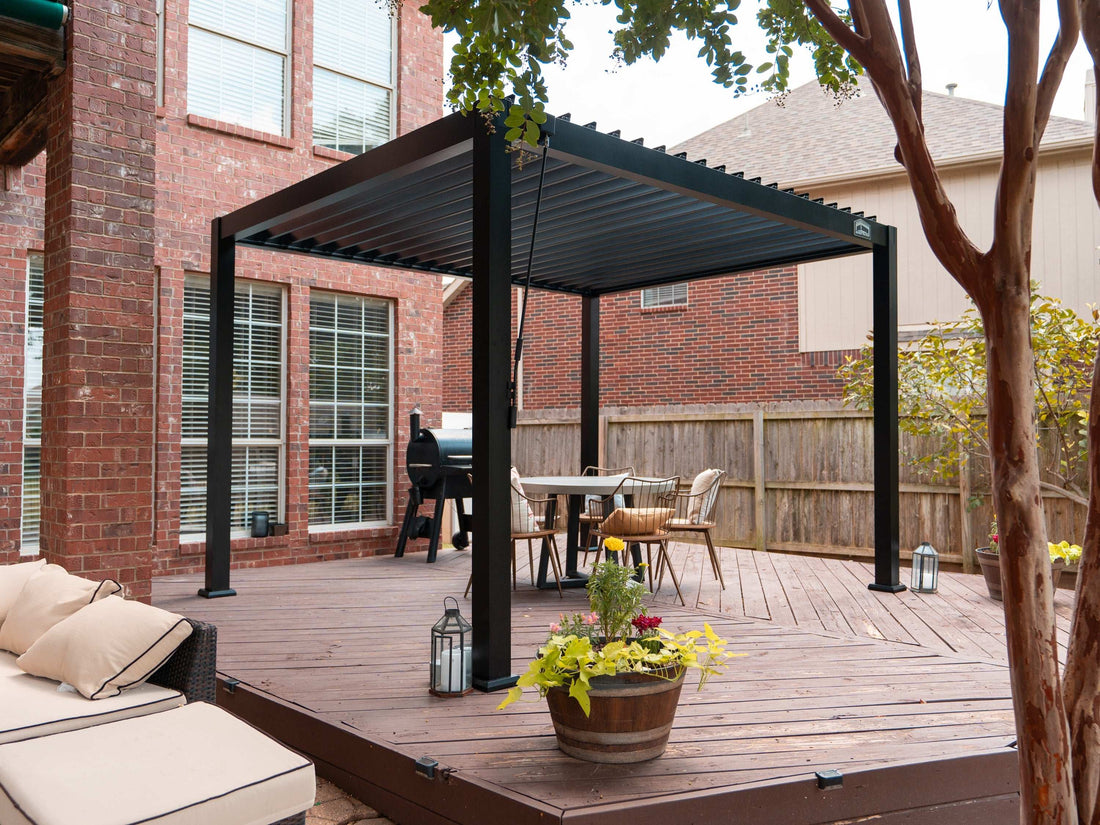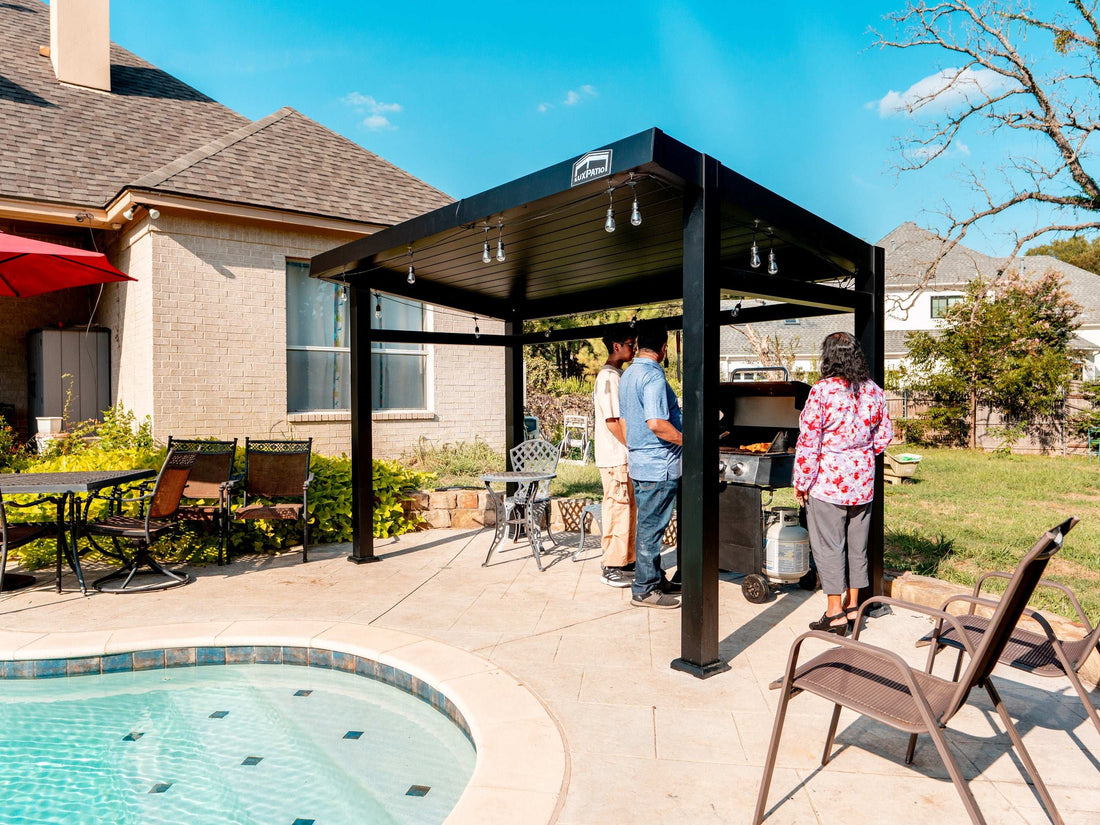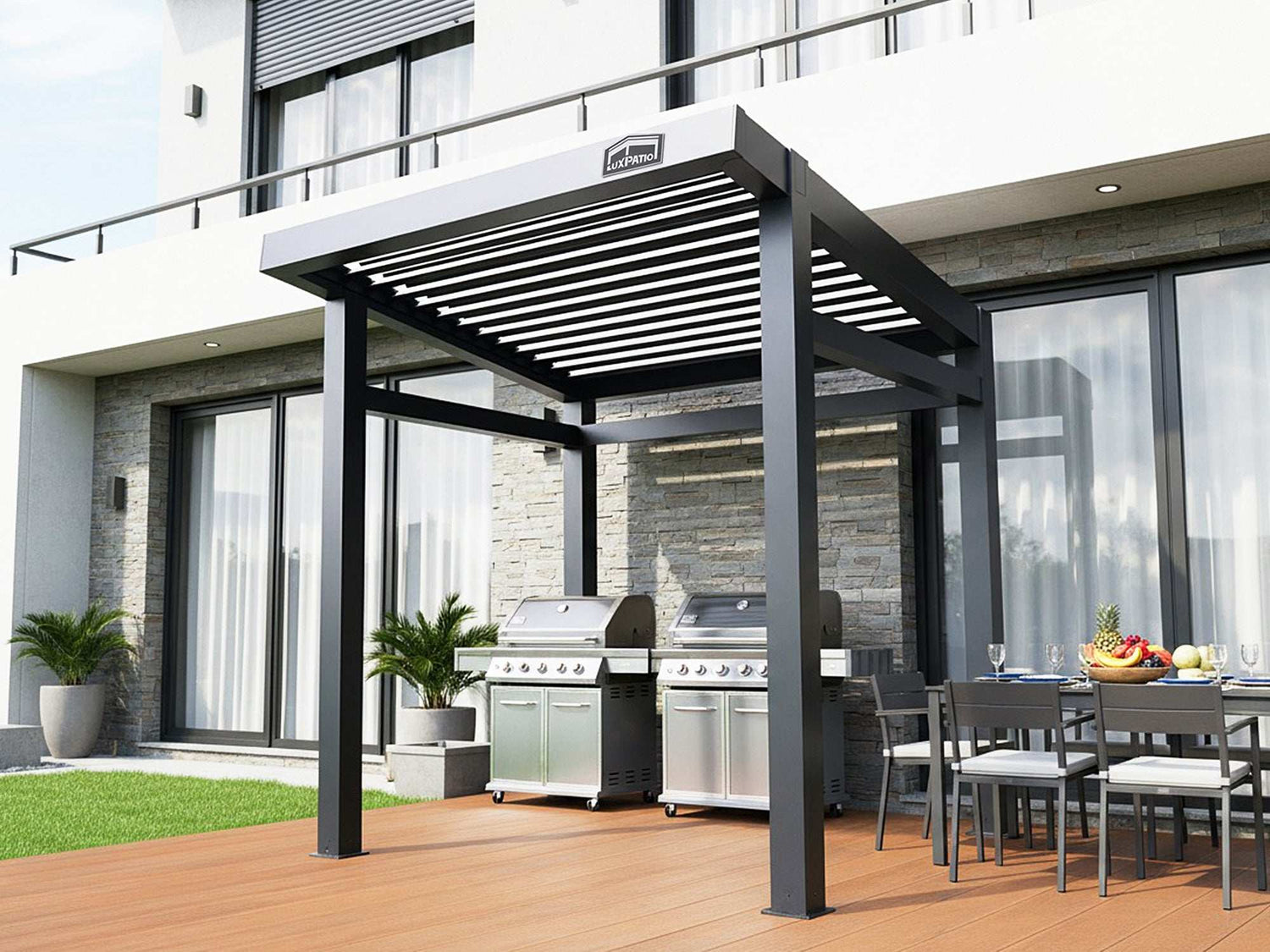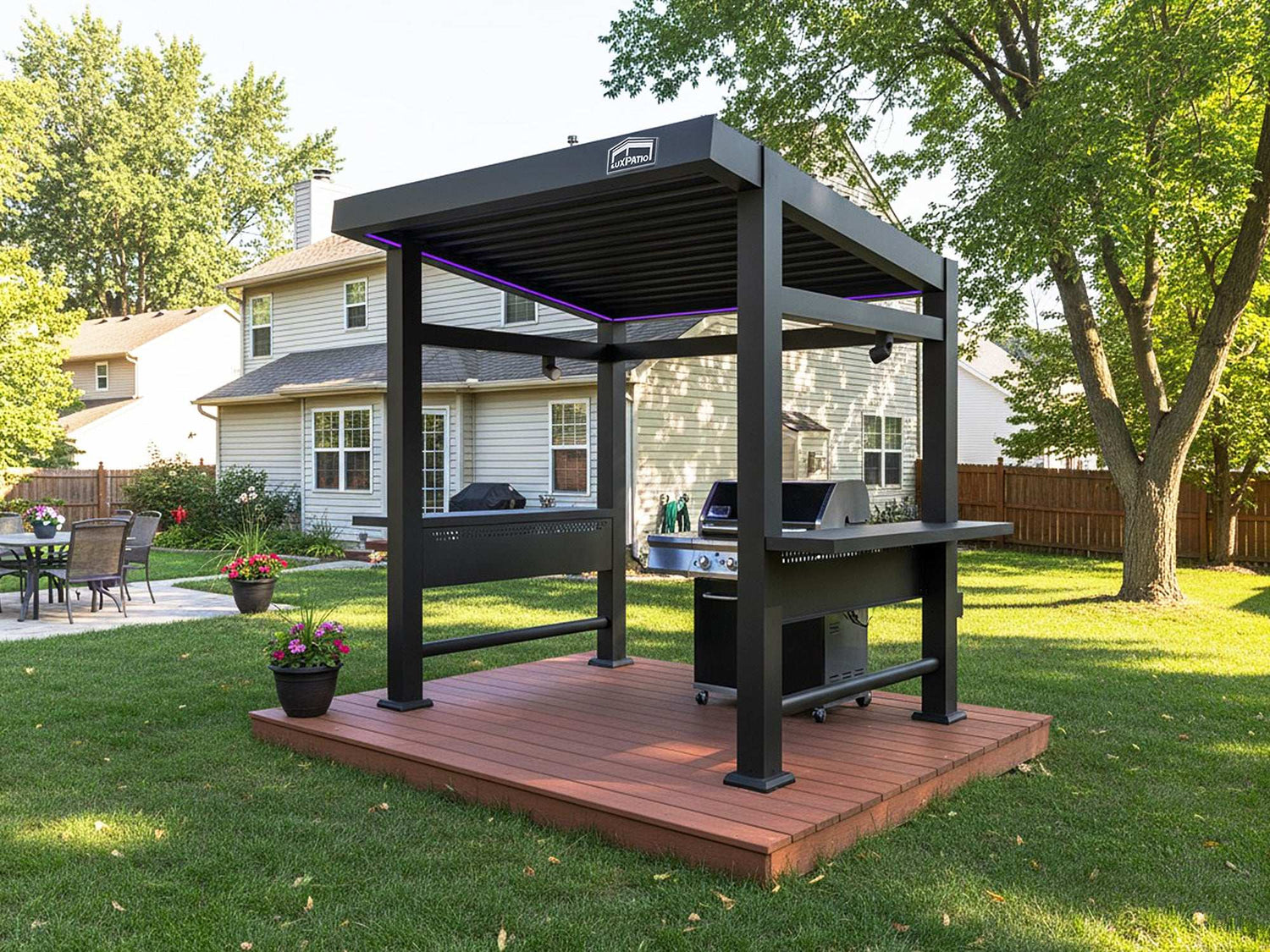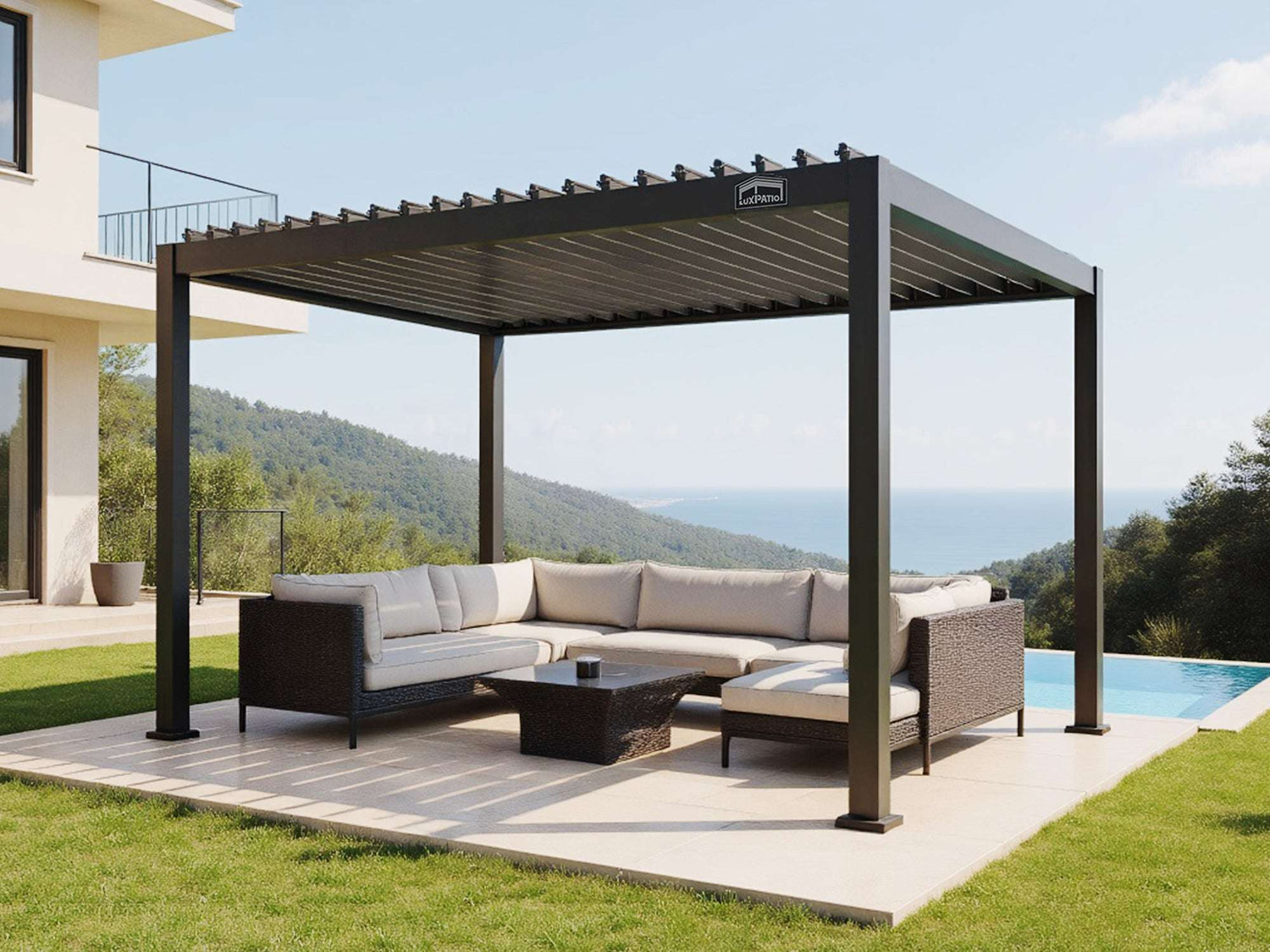A beautiful garden patio does not happen by accident. It comes from reading the site with clear eyes, then pairing the right plants with simple care that fits your week. This guide gives you a short audit to understand light and heat, plant lists and container recipes that actually work, vertical options when floor space runs tight, and a water-wise routine that keeps everything alive without daily chores. Skim, pick two or three moves that match your space, and start with the checklist at the end.
Read Your Garden Patio: Light, Wind, and Heat
Before buying a cart of plants, slow down and look at what your patio offers every day. Sun shifts by season, hard surfaces bounce heat, and narrow passages can behave like wind tunnels. Ten minutes of observation pays for itself.
Log Your Light
Give yourself one or two days to watch the sun. Set a phone reminder each hour and note where the light actually lands. Mark spots as full sun at six hours or more, partial sun or bright shade at four to six, and shade under four. Recheck after the trees leaf out or when the season turns. Photos with quick time stamps make a perfect memory aid and help you place pots with confidence.
Spot Heat and Wind
Pavers and pale walls reflect warmth into containers, especially on the west and south edges during late afternoon. Walk the patio when it is hottest and notice where the wind funnels between fences or buildings. If one corner bakes, plan a thin screen, a curtain panel, or a tall evergreen that throws shade for neighbors behind it. Small changes in placement often cut heat stress by a lot.
Containers and Media Essentials
Healthy roots start with drainage. Pick containers with real holes and raise them on feet if water tends to sit under the base. Use a loose, well-drained potting mix rather than garden soil, which compacts in pots. Cover the surface with gravel or shredded bark to slow evaporation and keep leaves clean. Think of that top layer as sunscreen for the mix.
Check Your Zone
Check USDA hardiness zones before choosing perennials or woody vines. Labels that match your zone live longer with less fuss. Borderline favorites still work if you park them by a warm wall, choose a deeper pot, and plan simple winter protection.

Full Sun, Low Water: Best Patio Plants
Bright locations reward plants that sip water and bring fragrance or structure. Aim for a few dependable anchors and a couple of seasonal accents so the display stays fresh.
Mediterranean Herbs
Lavender, rosemary, thyme, and salvias handle heat, invite pollinators, and smell great after light grooming. Give them space to breathe and a fast-draining mix. After the first bloom, pinch tips to keep mounds tight and encourage a second show.
Succulents and Architectural Foliage
Sedums fill gaps and offer clean flowers. Agaves and yuccas add a sculptural note where space allows. One bold centerpiece with three smaller sedums around it creates a balanced container that asks for little. In frost-prone areas, move tender succulents under cover when nights turn cold.
Edible-ornamental Combos
Dwarf citrus in a large container delivers glossy leaves and seasonal fruit. Patio tomatoes and peppers pair well with herbs planted along the rim. Add a ring or soft tie early so stems set safely, and you avoid midseason wrestling.
Easy Care Setup
Group thirstier edibles together, and keep drought-tolerant plants together. A short drip line on a simple timer makes watering consistent, and self-watering pots give you a helpful buffer during hot spells. A thin layer of gravel or bark on top reduces splash and water loss.
Tip: searching "patio plants full sun" is an easy way to see varieties with proven heat tolerance if you want extra ideas before shopping.

Partial Sun to Bright Shade: Layer With Leaves and Blooms
Four to six hours of light suits layered planting. The rhythm comes from leaf shape and tone, then a steady touch of color.
Lead With Foliage
Shade-tolerant hostas set the base with big, calm leaves. Heucheras bring wine, lime, or caramel tones that carry through most of the year. Small bulbs like dwarf allium or oxalis add sparkle without stealing the show.
Evergreen Backbone
Star jasmine on discreet wires or a slim trellis gives a tidy green wall and light fragrance in warm months. Bay laurel provides a stable, prunable form where scent is less important. Keep air moving around leaves to limit mildew.
Three-Piece Container Plan
Use this trio when you feel stuck. For example, anchor with star jasmine, fill with a heuchera, accent with a low herb for scent. Limit the palette to three to five tones so the grouping reads as one idea instead of a collage.
Make Shade Shine: Tough Low-Light Plants and Contrast Tricks
Shade can look flat until you play with texture, color, and a little light. You do not need heavy gear to get results.
Shade-tough Picks
Ferns bring fine texture and respond well to regular grooming. Cast-iron plant handles deep corners with glossy leaves that shrug off missed waterings. Sansevieria works outdoors in mild climates and adds clean vertical lines. Space plants so air can move around the crowns.
Simple Visual Lift
Choose pale or light gray containers that bounce light back into foliage. Add a small downlight in the evening to pull detail forward; warm white between 2700 and 3000 K flatters greens. Pair one broad leaf with two finer textures for a deliberate contrast.
Water the Smart Way
Shade often tricks people into overwatering. Check the top inch with a finger. Water until you see it exit the holes, then empty saucers after rain so roots stay oxygenated. Clip yellow fronds promptly to keep crowns healthy.
"patio shade plants" is a helpful search phrase when you want more candidates for dim corners.

Vertical Garden Ideas for Patios: From Easy to Advanced
Floor space limited? Grow up. These vertical garden ideas scale from quick wins to heavier systems. Choose only what your structure can carry.
Start With Light Climbers
Thin stainless wires or a simple grid handle these well. Anchor hardware into solid material every 30 to 45 centimeters. Train new growth sideways to trigger more buds, then shape once at season's end.
Limit Vigorous Vines
Big vines need robust frames and planned pruning in spring and fall. Keep them off lightweight roofs and delicate finishes. If that sounds risky in your setting, pick a gentler species and enjoy fewer repairs.
Grow Edibles Up
Grapes add shade and fruit if the frame carries storm loads. Beans and cucumbers give a seasonal, low-weight option on netting or a teepee. Place them near the kitchen door for quick harvests.
Pocket Wall Planters
Before hanging planters, add waterproofing and plan where water will go. A drip line or small recirculating setup saves daily time. Group pockets by water needs so you do not overwater one plant to keep another happy.
Rail Boxes and Baskets
Use railing planters on balconies and baskets from sturdy brackets. Keep each container to a single light level. Mixing sun lovers and shade lovers in one box shortens the life of both.
Water Wise Care: A Low-Maintenance Routine
Plants thrive when water arrives in steady doses, and roots can breathe. A simple routine does the heavy lifting for you.
Hydro-zoning and Smart Irrigation
Cluster plants by thirst into high, medium, and low groups. A timer on a short drip line gives consistent moisture and frees your morning. If drip is not practical, group the high-need containers by a hose point and keep the rest farther away to avoid accidental overwatering. The approach suits drought-tolerant plants as well as edibles.
Mulch and Cluster
Top pots with gravel or shredded bark at about one to two centimeters deep. Group similar species so leaves overlap a little. That shared shade lowers evaporation and keeps weeds from taking hold.
Container and Media Choices
Loose, well-drained mix with perlite or pumice keeps oxygen around roots. Larger pots buffer heat and stretch the time between waterings. In peak summer, pull containers into gentle clusters to reduce wind exposure and surface loss. This is also the easiest way to protect tender plantings on hot afternoons.
Quick Reference: Choose by Light and Purpose
Use this table when you want fast answers for a shopping run. Each line favors durability and straightforward care, with one container plants for patio idea per light level.
| Light | Starter picks | Pot size | Notes |
| Full sun | Lavender, rosemary, thyme, sedums, lantana, blue fescue, salvias | 18–22 in | Fast draining mix, gravel mulch, deep water weekly to start |
| Partial sun or bright shade | Heucheras, star jasmine, honeysuckle, dwarf allium, oxalis | 16–20 in | One anchor, one seasonal star, one small accent; keep to 3–5 tones |
| Shade | Cast-iron plant, shade ferns, ivy on an independent trellis | 14–18 in | Pale pots and a small downlight help visibility; water by touch, not by schedule |
One reminder: confirm your zone in the USDA hardiness zones map before selecting perennials.

Start Your Patio Garden
You now have a clear path: read the space with quick light notes and a glance at heat and wind, match plants to those conditions, add height with simple verticals when floor space is tight, and keep everything steady with a water-wise routine. Full sun spots favor fragrant herbs and sculptural forms; partial light thrives on foliage layers; shaded corners wake up with texture, pale pots, and gentle lighting. The quick reference helps you shop with confidence, and zoning by thirst keeps care predictable.
Take one small step today. Walk the patio and record the light. This weekend, plant a single container or train one easy climber, then set a modest watering rhythm and check back in two weeks. With calm, steady moves, your garden patio will turn into an outdoor room that feels good to live in all season long.
FAQs
Q1. What fertilizer schedule works best for patio containers?
For containers, mix controlled-release at planting, then quarter-strength liquid feed biweekly; bloomers favor higher potassium, foliage plants slightly more nitrogen.
Q2. How should I handle pests without harsh chemicals?
Scout weekly; treat with insecticidal soap or 1% horticultural oil; release lady beetles at dusk; rotate modes to prevent resistance.
Q3. Does water quality matter for patio plants?
Aim irrigation pH 6.0–6.8; excess bicarbonates cause chlorosis. Collect rainwater or acidify tap with citric acid; flush salts monthly.
Q4. When do I repot container plants?
Up-pot when roots circle or water rushes through; go two to three inches wider. Root-prune early spring; refresh the top third annually.
Q5. Will night lighting harm pollinators?
Use shielded, warm 2700K LEDs on timers; limit hours after dusk. Avoid upward beams; dim near blooms to protect nocturnal pollinators.




